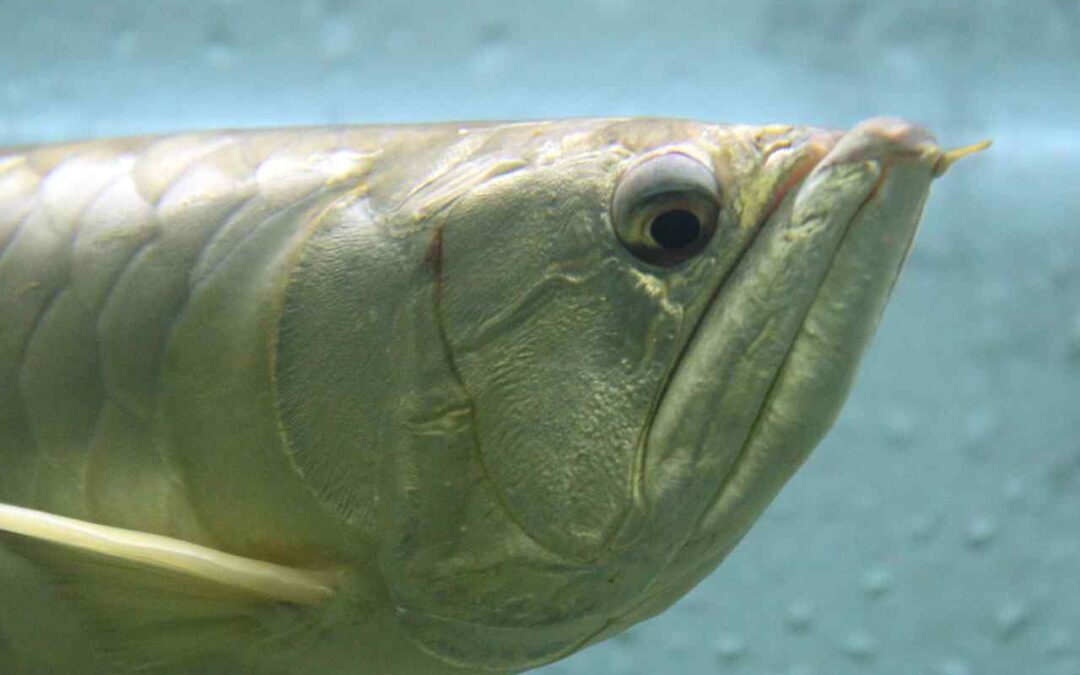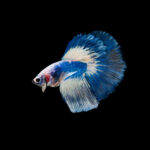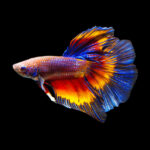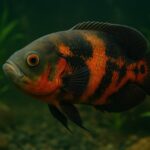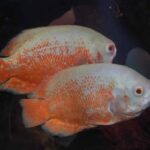Arowanas are one of the most beautiful freshwater fish available for pet owners. With their shimmering scales, elegant swimming style, and dragon-like quality, it is easy to see why these ancient fish are considered symbols of good luck, strength, and wealth in a variety of cultures. Of course, with all of that beauty comes a critical truth: they require ample space.
If you’re planning to keep an Arowana, tank size isn’t just a detail; it’s one of the most important aspects of their care. These fish grow rapidly, are powerful swimmers, and have strong jumping instincts. Let’s explore the ideal tank size, setup recommendations, and long-term care considerations to keep your Arowana healthy and thriving.
Why Tank Size Matters for Arowanas
Arowanas are built for movement. In the wild, they roam slow-moving rivers and flooded forest areas, where they can grow well over 3 feet long. They’re known as surface dwellers, often swimming just beneath the waterline and leaping to catch prey.
A cramped tank can lead to a variety of issues—stunted growth, spinal deformities, stress, and reduced lifespan. These majestic fish don’t just need a place to live—they need room to express their natural behaviors. A spacious tank also helps distribute waste more effectively, maintaining better water quality and giving you more control over the environment.
Recommended Tank Sizes for Different Arowana Species
According to aquarist experts, the minimum tank size for a Silver Arowana is 200 gallons. However, larger species and mature adults may need 500 gallons or more.
Here’s a quick breakdown:
- Silver Arowana: Minimum 200 gallons (ideal dimensions: 5 feet long, 3 feet wide, 2 feet deep).
- Asian Arowana (Scleropages formosus): Minimum 250–300 gallons for adults.
- Jardini Arowana (Scleropages jardinii): Minimum 250 gallons, though larger is always better.
- Black Arowana: Around 250–300 gallons once mature.
- Arowana hybrids or giant species: May require 500–1000 gallons as they can grow well over 3 feet in length.
While some beginners start with smaller tanks for juveniles, Arowanas grow extremely fast—often reaching 12 inches in a few months. It’s far better to invest in a large setup early on than to repeatedly upgrade and stress your fish.
Ideal Tank Dimensions
Unlike deep tanks made for bottom dwellers, Arowanas thrive in long and wide tanks that mimic river-like conditions.
- Length: At least 5–6 feet
- Width: 3 feet or more to allow side-to-side turning.
- Height: Around 2 feet is sufficient since they don’t swim vertically as much.
These dimensions give them the horizontal swimming room they crave. Remember, an Arowana should be able to turn around comfortably without bending its body—a clear sign your tank size is appropriate.
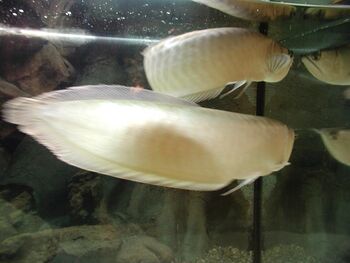
Growth and Space Considerations
One of the biggest mistakes new owners make is buying a small tank “for now” and planning to upgrade later. Unfortunately, Arowanas grow too quickly for this approach to work.
- Juveniles (around 4–6 inches) can double in size within months.
- Adults can reach 24–36 inches or more, depending on the species and environment.
Because they are such fast growers, upgrading tanks every few months can be expensive, time-consuming, and harmful to the fish. Moving an adult Arowana to a new tank increases the risk of injury, especially since they are easily startled and can jump or thrash during transfers.
To make your life easier, start big and grow into it. A stable environment from the beginning ensures consistent growth and reduces stress.
The Importance of a Secure Lid
Arowanas are infamous jumpers. In their natural environment, they leap from the water to snatch insects and small prey from branches above the surface. In an aquarium, this instinct doesn’t go away.
Arowanas can jump several feet out of the tank, often leading to fatal injuries. That’s why it’s crucial to:
- Always use a tight, heavy, and secure lid with no gaps.
- Avoid lightweight covers or glass tops that can shift.
- Consider locking clips for extra security.
- Keep the water level slightly lower to reduce jump risk.
Many aquarists also keep the water level slightly below the rim to prevent sudden jumps when the fish startle.
Filtration and Water Quality
Because Arowanas are large and messy eaters, they produce significant waste. Maintaining excellent filtration is a must.
- Filtration: Choose a sump or canister filter rated for twice your tank’s volume.
- Water changes: Replace 20–30% of the water weekly to keep ammonia and nitrate levels in check.
- Temperature: Keep between 75–82°F (24–28°C).
- pH range: Between 5 and 7.5, slightly acidic to neutral.
- Aeration: Strong aeration ensures adequate oxygen, especially for heavily stocked tanks.
Arowanas prefer clean, well-oxygenated water with a gentle current, similar to their native rivers. A canister or sump filter system is ideal for handling their bio-load efficiently.
Substrate and Décor Tips
When setting up your Arowana tank, simplicity often works best. Arowanas spend most of their time near the top of the tank, so focus on open swimming space rather than decorations.
- Use fine sand or smooth gravel as substrate.
- Avoid sharp rocks or ornaments that could scratch their scales.
- Add sturdy driftwood or minimal plants for a natural look, but keep the central area open.
- Use soft, indirect lighting—Arowanas prefer subdued brightness that mimics dawn or dusk.
Arowanas often swim near the surface, so leave plenty of open water at the top for them to glide effortlessly.
Choosing the Right Tank Mates for Arowanas
Arowanas can be territorial and predatory, especially as they grow. Avoid keeping them with any fish small enough to fit in their mouth.
Suitable tank mates (for very large setups) include:
- Large catfish species (like Plecos or Redtail Catfish)
- Bichirs
- Large Oscar fishes
- Stingrays (for experienced keepers with massive tanks)
However, every Arowana has a unique temperament. Always monitor closely for aggression, especially when introducing new tank mates.
Feeding and Nutrition
Arowanas are natural predators with hearty appetites. They enjoy a varied diet of protein-rich foods.
Recommended diet includes:
- Pellets formulated for carnivorous fish
- Shrimp or prawns (fresh or frozen)
- Crickets, mealworms, or superworms as treats
- Small feeder fish, sparingly and quarantined for safety
Feed twice daily when young and once daily when mature. Avoid overfeeding—it can cause bloating and foul the water quickly.
Lifespan and Long-Term Care
With proper care, Arowanas can live 10–20 years or more in captivity. Lifespan depends heavily on tank size, diet, and water quality.
Feed them a varied diet of:
- High-quality pellets
- Shrimp
- Crickets or mealworms (occasionally)
- Fish fillets or small feeder fish (sparingly)
Overfeeding can foul the water, so provide only what they can eat in a few minutes.
Long-term care means routine water testing, consistent feeding schedules, and gentle handling during maintenance. These fish become intelligent and interactive over time, even recognizing their owners.

Common Mistakes to Avoid
- Buying a small tank “for now.”
Arowanas grow fast—upgrading later is harder than you think. - Ignoring the lid.
One jump can lead to tragedy. Always secure the top. - Skipping filtration upgrades.
A strong, efficient filter is essential to handle the waste load. - Overcrowding with other fish.
Arowanas prefer calm, open spaces without constant territorial disputes. - Overfeeding.
Uneaten food leads to poor water quality and health issues.
Avoiding these mistakes helps your Arowana live a long, stress-free life.
FAQs About Arowana Tank Size
1. What is the minimum tank size for a Silver Arowana?
A minimum of 200 gallons is recommended, but larger tanks around 250–300 gallons are better for long-term care.
2. Can I keep an Arowana in a 100-gallon tank temporarily?
Only for a very young juvenile, and even then, only briefly. Arowanas outgrow small tanks rapidly, often within months.
3. Why does tank width matter more than height?
Arowanas are surface swimmers and need space to turn and glide horizontally, so width and length are more important than depth.
4. How often should I upgrade my Arowana’s tank?
Ideally, you shouldn’t have to. Start with a tank that can accommodate their adult size to avoid stress and rehoming issues later.
5. Can I keep two Arowanas together in one tank?
It’s risky. Arowanas are territorial and may fight, especially in smaller tanks. Only very large tanks (500+ gallons) can safely house more than one.
6. Do Arowanas jump out of the tank?
Yes. They’re powerful jumpers and can leap several feet, so always use a secure, tight-fitting lid.
7. What kind of filter should I use?
A sump or canister filter rated for double your tank’s volume is ideal to handle the waste these big fish produce.
8. How often should I change the water?
Do a 20–30% water change weekly and clean filters regularly.
9. What’s the ideal water temperature and pH?
Keep the temperature between 75–82°F and the pH around 6.5–7.5.
Final Thoughts
Owning an Arowana is both a privilege and a responsibility. These fish demand space, care, and respect—but in return, they reward you with stunning beauty and a captivating presence few other species can match.
Whether it’s a Silver, Asian, or Jardini Arowana, always remember: bigger is better when it comes to tank size. A 200-gallon tank is just the starting point for most species, while larger adults may require 500 gallons or more.
Plan ahead, invest in proper filtration, and secure your setup. With the right care, your Arowana can become the true centerpiece of your aquarium for decades.

